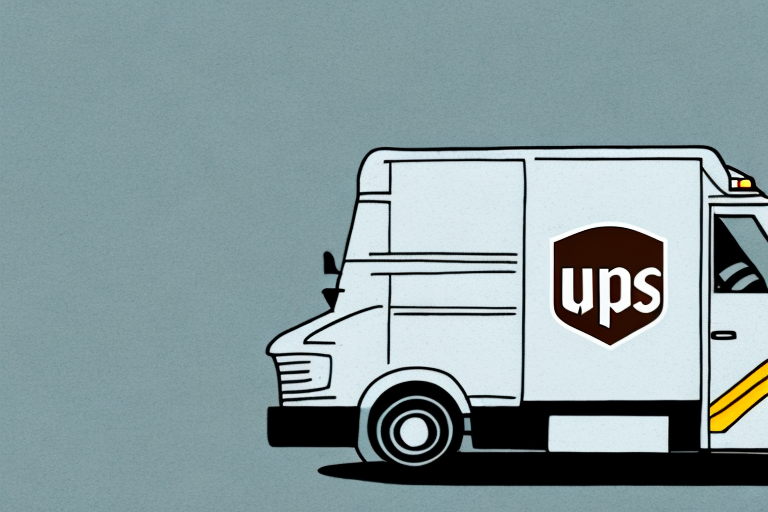How to Get the Best Shipping Rates with UPS
When it comes to shipping, finding the best rates can make a significant difference for your business's bottom line. UPS is a popular choice for many businesses due to its reliability and comprehensive range of services. In this article, we'll explore strategies to secure the best shipping rates with UPS, from understanding the various factors that influence your costs to negotiating more favorable deals.
Understanding UPS Shipping Rates and Fees
UPS shipping rates are determined by several factors, including the weight and dimensions of your package, the selected shipping service, and the destination address. Beyond standard rates, UPS imposes additional fees such as fuel surcharges and residential delivery fees.
The weight and dimensions of your package are crucial in calculating your UPS shipping rates. Heavier and larger packages typically incur higher costs compared to smaller, lighter ones. Accurately measuring and weighing your package ensures you are billed correctly, avoiding unexpected charges.
Another determinant of your UPS shipping rates is the chosen shipping service. UPS offers a spectrum of shipping options, including ground, air, and international services, each with distinct rates and delivery timelines. Selecting the service that aligns with your business needs can optimize both cost and delivery efficiency.
Factors That Affect Your UPS Shipping Rates
Several key factors influence your UPS shipping rates:
- Package Weight and Size: Heavier and larger packages cost more to ship.
- Shipping Distance: Longer distances increase shipping costs.
- Item Type: Oversized or irregularly shaped items may incur additional fees.
- Service Level: Expedited services come at a premium compared to standard options.
- Seasonality: Shipping during peak seasons like holidays can lead to higher rates due to increased demand.
Additionally, UPS discounts and promotions can significantly reduce your shipping expenses. Businesses that ship in large volumes may qualify for volume discounts, while special promotions might be available for specific shipment types or through UPS's online shipping tools. According to the Statista report, UPS reported a global revenue of approximately $100 billion in 2023, highlighting its extensive operations and potential for competitive pricing.
Tips for Negotiating Better UPS Shipping Rates
Although UPS offers competitive rates, there are effective strategies to lower your shipping costs:
- Volume Negotiation: Engage with a UPS representative to discuss your shipping volume and explore potential discounts or customized plans.
- Alternative Shipping Methods: For small packages, consider using services like USPS Priority Mail or FedEx SmartPost, which might offer cost savings.
- Shipment Consolidation: Combine multiple packages destined for the same location to benefit from lower overall shipping costs.
- Leverage UPS SurePost: Utilize UPS's SurePost service for certain shipments to achieve additional savings.
How to Choose the Right UPS Shipping Service for Your Business
Selecting the appropriate UPS shipping service is vital for balancing cost and efficiency. Consider the following when making your choice:
- Package Size and Weight: Heavy or bulky items may be better suited for UPS Freight's LTL (Less-Than-Truckload) services, while smaller packages might be more economical with UPS SurePost.
- Delivery Speed: Opt for ground shipping for cost savings on non-urgent deliveries, or expedited air services for faster delivery times.
- Destination: International shipments may require specialized services to ensure compliance and cost-effectiveness.
Choosing the right service not only ensures competitive rates but also enhances customer satisfaction through timely deliveries.
How to Save Money on UPS Shipping Costs
Beyond negotiating rates and selecting the right service, additional strategies can help reduce UPS shipping costs:
- Utilize Online Tools: Take advantage of UPS's online shipping and tracking tools to streamline operations and reduce manual errors.
- Use Your Own Packaging: Opt for your own packaging materials instead of UPS-branded options to lower costs.
- Consolidate Shipments: Combine multiple packages going to the same destination to benefit from bulk shipping rates.
- Explore Shipping Options: Evaluate different shipping services like ground or freight to identify the most cost-effective solution.
The Benefits of Using UPS for Your Shipping Needs
Choosing UPS comes with numerous advantages beyond competitive shipping rates:
- Reliability and Speed: UPS is renowned for its consistent delivery times and dependable service.
- Advanced Tracking System: UPS provides real-time tracking from shipment departure to delivery, enhancing transparency and customer communication.
- International Capabilities: With a vast global network, UPS facilitates efficient international shipping to nearly any destination.
- Sustainability Commitments: UPS is dedicated to sustainable practices, which can align with your business's environmental goals.
According to UPS's International Services overview, UPS operates in over 220 countries and territories, underscoring its extensive reach and capacity to handle diverse shipping needs.
How to Track Your UPS Shipments and Monitor Delivery Times
Effective tracking is crucial for ensuring timely deliveries and maintaining customer satisfaction. UPS offers several tools to monitor your shipments:
- UPS Mobile App: Track packages in real-time, receive push notifications for delivery updates, and schedule delivery times conveniently.
- Online Tracking: Access detailed tracking information through the UPS website, including the status and estimated delivery time of your packages.
- Email and Mobile Alerts: Receive automatic updates via email or SMS to stay informed about your shipment's progress.
For added flexibility, UPS provides delivery options such as holding packages at UPS locations, redirecting to alternative addresses, or rescheduling delivery dates to accommodate your availability.
Understanding the Different Types of UPS Packaging Options
Selecting the appropriate packaging is essential for the safety and cost-effectiveness of your shipments:
- Standard Boxes: Available in various sizes, these sturdy cardboard boxes are suitable for most items and are designed to withstand the shipping process.
- Specialized Containers: For fragile or hazardous items, UPS offers specialized containers that provide additional protection and comply with safety standards. For example, glassware can be shipped using containers with foam inserts to prevent breakage, while hazardous materials require containers that meet specific regulatory requirements.
Choosing the right packaging not only protects your items but can also influence the overall shipping cost by optimizing package dimensions and weight.
How to Print Labels and Schedule Pickups with UPS
Streamlining your shipping process can save time and reduce errors. UPS provides online tools to simplify these tasks:
- Print Labels: Use UPS's online platform to create and print shipping labels, ensuring accurate and professional labeling.
- Schedule Pickups: Arrange for package pickups directly from your location at your convenience, eliminating the need to visit a UPS drop-off point.
- Manage Shipments: Access comprehensive shipment management features, including tracking, reporting, and invoicing, through UPS's online dashboard.
These tools enhance operational efficiency, allowing you to focus on other aspects of your business while ensuring your shipments are handled effectively.
Common Mistakes to Avoid When Using UPS for Shipping
To maintain cost-effectiveness and ensure smooth deliveries, avoid these common mistakes when using UPS:
- Improper Packaging: Inadequate packaging can lead to damaged goods and increased costs due to returns or claims.
- Incorrect Labeling: Ensure all labels are accurate and clearly displayed to prevent delivery delays or misrouting.
- Insufficient Insurance: Consider purchasing additional insurance for valuable or fragile items to protect against loss or damage.
- Address Errors: Double-check delivery addresses for accuracy to avoid costly redirections and delays.
- Ignoring Prohibited Items: Familiarize yourself with UPS's prohibited items list to prevent shipment rejections and potential legal issues.
Adhering to UPS's shipping guidelines and best practices can help you avoid these pitfalls, ensuring a seamless shipping experience.
How to Handle Damaged or Lost Packages with UPS
Despite best efforts, packages may occasionally be damaged or lost during transit. Here's how to address these issues effectively:
- File a Claim: Promptly file a claim with UPS for any damaged or lost packages, providing all necessary documentation to facilitate the process.
- Inspection and Documentation: Inspect damaged packages immediately upon receipt, photograph any visible damage, and retain all original packaging materials as required by UPS.
- Tracking Assistance: Utilize UPS's tracking system to locate lost packages, and collaborate with UPS representatives to resolve the issue.
It's important to note that UPS has specific time limits for filing claims, so acting swiftly can enhance the likelihood of a successful resolution. For detailed guidance, refer to UPS's claims process.
Comparing UPS Shipping Rates to Other Competitors in the Market
When evaluating your shipping options, comparing UPS rates to those of other carriers is essential to determine the best value for your business. Consider factors such as price, delivery speed, reliability, and service offerings. Major competitors include:
- FedEx: Known for its expedited shipping services and extensive international network.
- USPS: Often more economical for small packages and offers unique services like Priority Mail.
- DHL: Specializes in international shipping with a strong presence in Europe and Asia.
By conducting a thorough comparison, you can identify the carrier that best aligns with your business needs and budget. Utilizing third-party comparison tools and consulting industry reports from sources like Statista can provide valuable insights into shipping rates and carrier performance.
In conclusion, by understanding UPS shipping rates and fees, selecting the appropriate shipping services and packaging, leveraging UPS's tools and services, and avoiding common pitfalls, your business can optimize shipping costs while maintaining reliable and efficient delivery. Regularly reviewing and adjusting your shipping strategy in response to market changes and business growth will further enhance your shipping efficiency and cost-effectiveness.




















